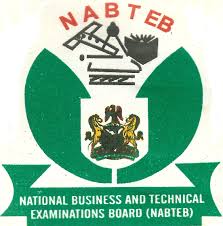2020 NABTEB ECONOMICS OBJ AND ESSAY QUESTIONS AND ANSWERS

Economic+Obj
1ACDBADBDCC
11CAABCCBCBA
21DDABAACDBD
31DBCCCDBACA
41BBCBBCDBCA
============================
Answer one (1) Question from PART I And Any other Four (4) Questions from PART II
======================================
PART-I
(1)
TABULATE
Output: 4, 9, 15, 20, 24, 27, 29, 30
TC: 45, 156, 264, 381, 481, 574, 679, 749
TR: 100, 190, 376, 522, 622, 691, 731, 748
MC: – , 22.2, A, 23.4, B=25, C, 52.5, 90
MR: – , D, E, 29.2, 25, 23, 20, F
(1ai)
MC = ∆TC/∆Q
MCA = TC15 – TC9/Q15 – Q9 = 264 – 156/15-9
= 108/6 = 18.0
MCB = TC24 – TC20/Q24 – Q20
= 481-381/24-20
= 100/4 = 25.0
MCc = TC27 – TC24/Q27 – Q24 = 574 – 481/27 – 24
= 93/3 = 31.0
(1aii)
MR = ∆TR/∆Q
MRD = TR9 – TR4/Q9 – Q4
= 190-100/9-4
= 90/5 = 18.0
MRE = TR15 – TR9/Q15 – Q9
= 376-190/15-9 = 186/6 = 31.0
MRF = TR30 – TR29/Q30 – Q29
= 748-731/30-29 = 17/1 = 17.0
(1bi)
The profit maximising output of the company is 24units
(1bii)
Reason in (1bi) above, MC=MR
(1c)
MC = MR at output 24
The profit maximising output = 25
(where MR=MC)
=======================================
(2ai)
In come elasticity between E and F
change in quantity demanded
= 150 -100 = 50
% change in quantity demanded= 50/100*100= 50%
Change in Income = 30,000 – 25,000 = 5000
% change in Income = 5000/25000 x 100 = 20%
Income elasticity of demand 50/20 =2.5
(2aii)
Income elasticity between G and H =
change in quantity demanded= 270-250 = 20
% change in quantity demanded = 20/250 * 100 = 8%
change in Income = 42,000 – 40,000 = 2000
change in Income
2000/40000 * 100 = 5%
Income elasticity of demand =8/5 =1.6
(2b)
Normal good and luxury good
=======================================
PART-II
(3a)
(i) Value
(ii) Value and Price
(iii) Wealth
(iv) Stocks and Flows
(v) Optimisation
(3b)
(i) Value:- Ordinarily, the concept of value is related to the concept of utility. Utility is the want satisfying quality of a thing when we use or consume it. Thus utility is the value-in-use of a commodity. For instance, water quenches our thirst. When we use water to quench our thirst, it is the value-in-use of water.
(ii) Value and Price:- In common language, the terms value and price are used as synonyms (i.e. the same). But in economics, the meaning of price is different from that of value. Price is value expressed in terms of money. Value is expressed in terms of other goods. If one pen is equal to two pencils and one pen can be had for Rs.10. Then the price of one pen is N100 and the price of one pencil is N50
(iii) Wealth:- In common use, the term ‘wealth’ means money, property, gold, etc. But in economics it is used to describe all things that have value. For a commodity to be called wealth, it must prossess utility, scarcity and transferability. If it lacks even one quality, it cannot be termed as wealth.
(iv) Stocks and Flows:- Distinction may be made here between a stock variable and a flow variable. A stock variable has no time dimension. Its value is ascertained at some point in time. A stock variable does not involve the specification of any particular length of time. On the other hand, a flow variable has a time dimension. It is related to a specified period of time.
(v) Optimisation:- Optimisation means the most efficient use of resources subject to certain constraints it is the choice from all possible uses of resources which gives the best results, it is the task of maximisation or minimisation of an objective function it is a technique which is used by a consumer and a producer as decision-maker.
(3c)
(i) Supply and demand.
(ii) Scarcity.
(iii) Opportunity cost.
(iv) Time value of money.
(v) Purchasing power.
=======================================
(4a)
(i) Weather
(ii) Price
(iii) level of technology
(iv) Cost of production
(v) Government policy
(4b)
(i) Weather:- If the weather of a particular area is favourable at a particular period, More agricultural products will be produced and their supply to the market will increase.
(ii) Price:- The higher the price of any commodity, the higher the quantity that will be supplied and vice versa.
(iii) Level of technology:- Improved techniques reduce cost per unit of product and increase output or supply.
(iv) Cost of production:- If the cost of production increases, The producer tends to produce a less of a commodity.
(v) Government Policy:- Government policy such as subsidy given to farmers, in the form of free importation of equipment can lower the production cost and increase supply.
========================================
(6a)
The law states that If one input in the production of a commodity is increased while all other inputs are held fixed, a point will eventually be reached at which additions of the input yield progresively smallery, diminishing, increases in output.
(6b)

Marginal product focuses on the changes between production totals and the quantity of resources. Average product shows output a specific level of input. The peak of the average product curve is the point at which the marginal product cuirve and average product Curve intersect for the points below to the left of this point, the marginal product of the extra input higher than the average prochuct for example, if adding another worker increases output by more than the average product of the total labor force, then the marginal Is product of the new worker will raise the average product amount, that are average product Curve must be below the marginal product
Curve. Similarly, If the new workers
add less product than the average
product amount, the average prodnet
curve will he above the marginal produa Curve (for all points to the right of the point of the intersection of the two curves). At the point of intersection, the additional workert produces the same as the average product of the total work forces there will be no change. The Marginal product Come may fall to Zero, showing that an additional worker will have no limpact production, for example, if there is more space left the work in, to or if machines are working at 100% Capacity and all raw materials have been used up.
(6c)
(i)It is important because certain factors of production are Kept fixed. All factors of production, land, labour, capital for enterprise cannot be increased every time.
(ii)it is important because it is part
of the basis for economists expectations
that a firm short-run marginal cost curves well slope upward as the number of units of output increase.
(iii)It is also an Important basis for
the law of Supply’s prediction that
the number of units of product that profit maximizing firm will wish
to sell increases as the price obtainable
for that product increases.
(iv)It is equally the concept that is
employed constantly in micro economic
theory and quite frequently in
Macroeconomic theory as well.
=======================================
(7a)
Monopoly Means a market structure characterized by a single seller, selling a unique product in the market. In a monopoly market, the seller faces no competition As he is the sole seller of goods with no close substitute.
(7b)
(i) Economies of Scale:- Economies of scale occur when increased output leads to lower average costs. Therefore new firms with relatively low output will find it difficult to compete because theirs average costs will be higher than the incumbent firms benefiting from economies of scale.
(ii) Natural/Geographical Barriers e.g Zimbabwe has 85% of the world supply of Chromium. If you don’t have oil in your country, you can’t enter the oil market. Geographical barriers could be more local. if you don’t have access to a good location for a theatre in say Covent Garden, It creates a barrier to entry.
(iii) Brand loyalty through advertising:- Developing consumer loyalty through establishing a strong brand image can deter entry. With a very strong brand image a new firm would have to spend a lot of money on advertising which is a sunk cost and a deterrent to entry. Some brands may be so strong that no amount of advertising may be able to dislodge the incumbent firm. For example, many firms have tried to enter the cola market, but none have been able to dislodge Coca-Cola and to a lesser extent Pepsi.
(iv) Limit Pricing:- This occurs when a firm sets price sufficiently low to deter entry. A monopoly may engage in limit pricing even though it means fewer profits, it prefers to keep prices lower to prevent competition. It is related to economies of scale.
=======================================
Completed.
Categories: NABTEB



